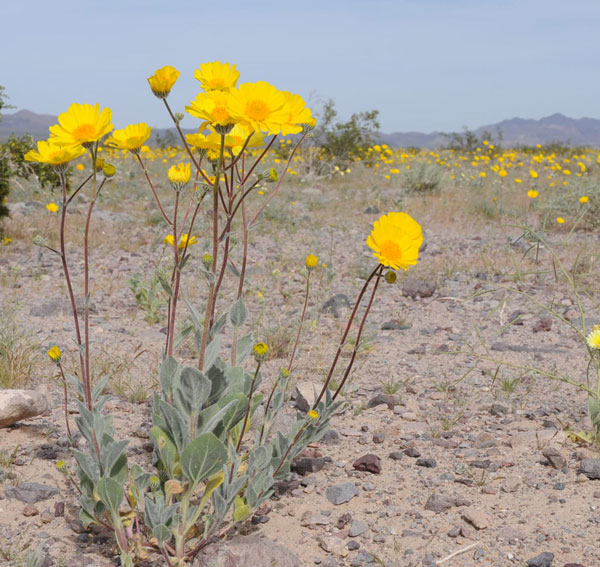^Desert gold (Geraea canescens) spread over the lower project site. This area was described as "low quality" and would be covered with thousands of 40-foot tall SunCatcher dishes.
Wildflowers Blooming
April 17, 2010 - We visited the Calico Solar Project site to see the great wildflower display, 37 miles east of Barstow in San Bernardino County, California. The lands are managed by Bureau of Land Management, and the proposed industrial SunCatcher dish array by Tessera/Stirling would cover over 8,000 acres. We explored the fan south of the Cady Mountains Wilderness Study Area, and found a huge diversity of plant and animal life.

^Project site in the distance, covering 8,230 acres of the bajada below the Cady Mountains.
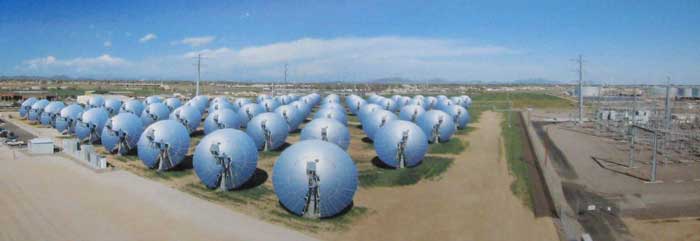
^Maricopa, Arizona power plant, near Phoenix, showing how SunCatcher dishes would be arrayed across the desert. In the case of the Calico Solar Project, 34,000 of these solar thermal dishes would be placed across a Mojave Desert shrubland fan.
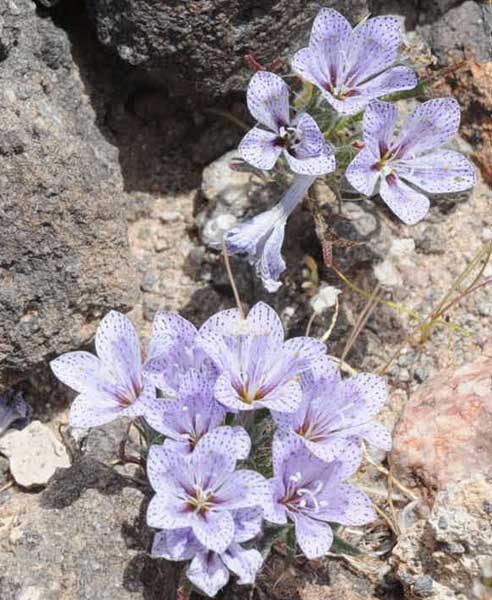
^Calico flower (Langloisia sp.) in a rocky spot.
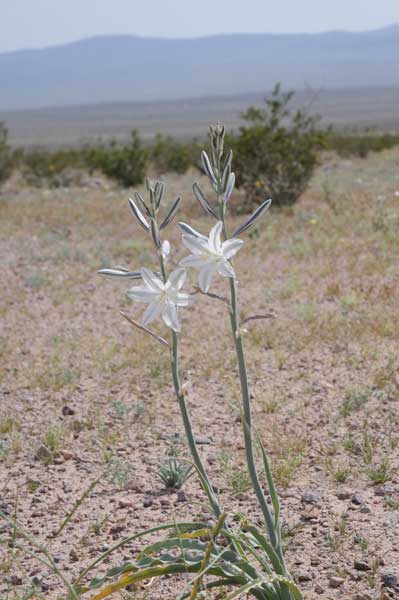
^Desert lilies (Hesperocallis undulata) are flowering all over the sandier lower bajada. This place would be an industrial solar thermal facility of approved.
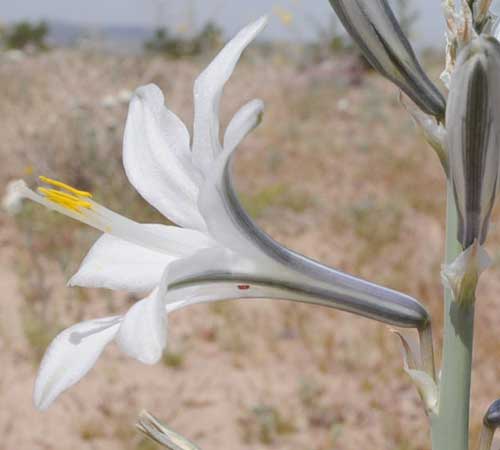
^Desert lily.
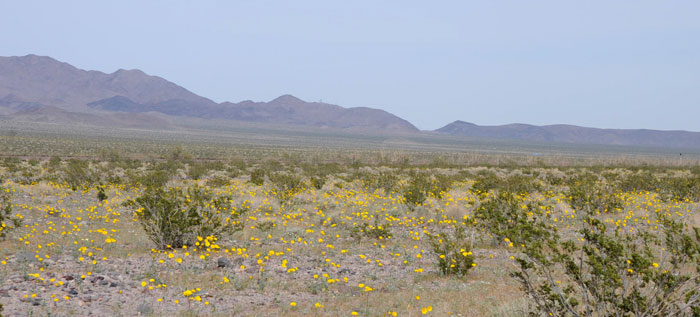
^Desert gold spread across the lower fans of the project site, looking east towards the Cady Mountains.
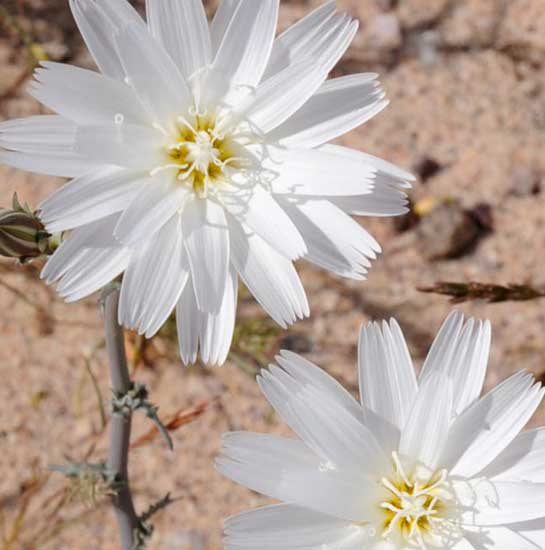
^Desert chicory (Rafinesquia neomexicana).
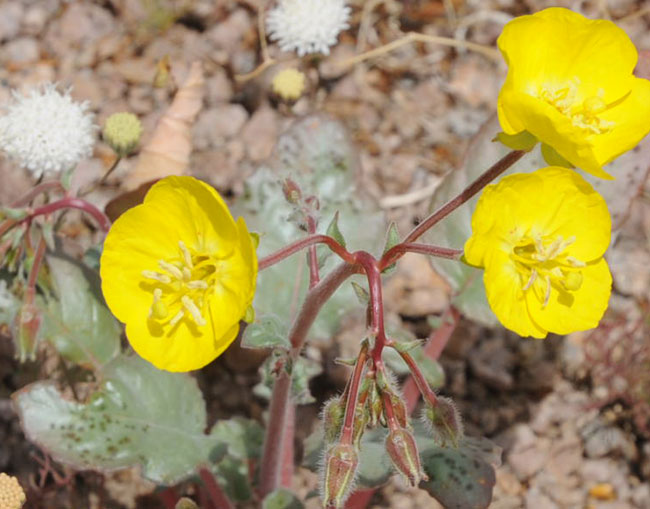
^Golden evening primrose (Camissonia brevipes).
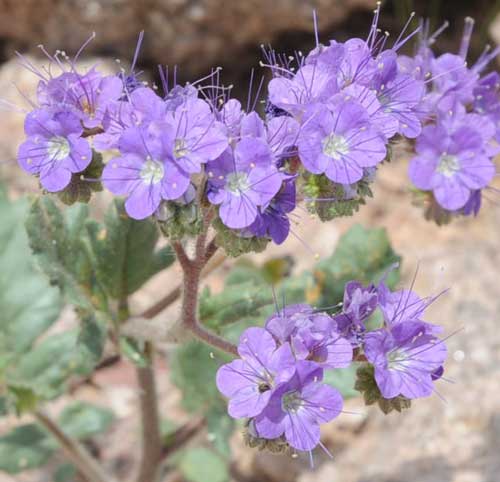
^Phacelia (Phacelia crenulata).
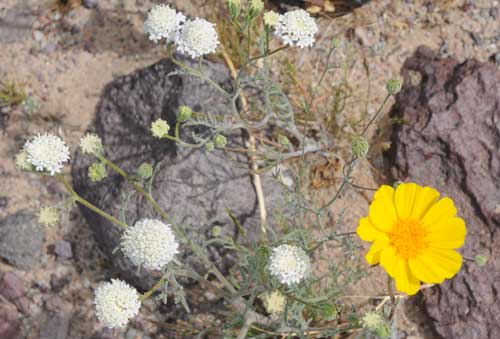
Pincushion flower (Chaenactis sp.) and Desert gold.
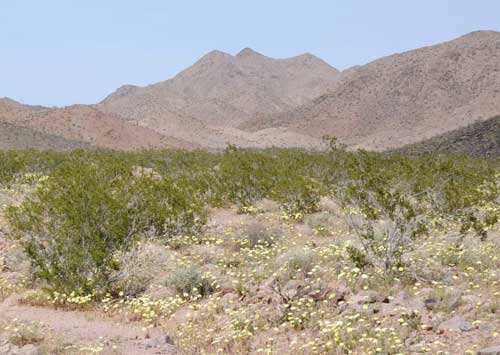
Desert Dandelion (Malacothrix glabrata) and creosote near the base of the Cady Mountains.
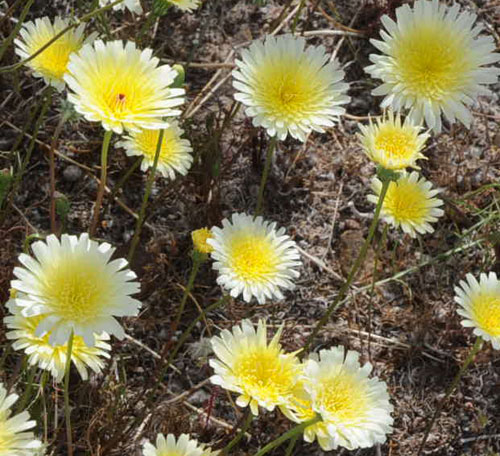
^Desert dandelions were filling acres of the upper fan on the project site.
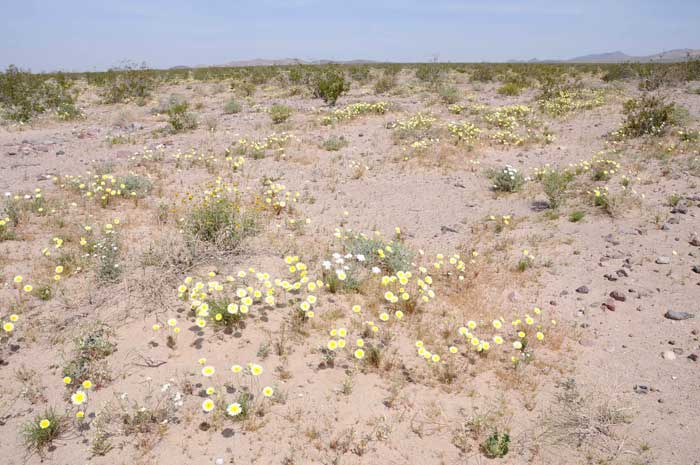
^Desert dandelions and white chicory.
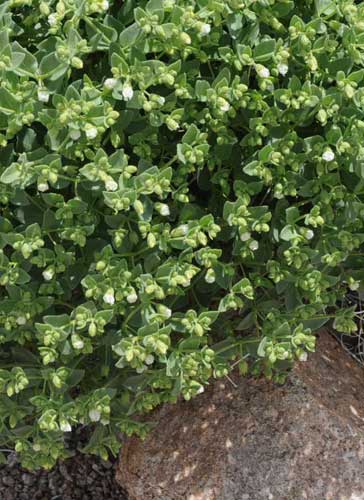
^Wishbone bush (Mirabilis bigelovii).
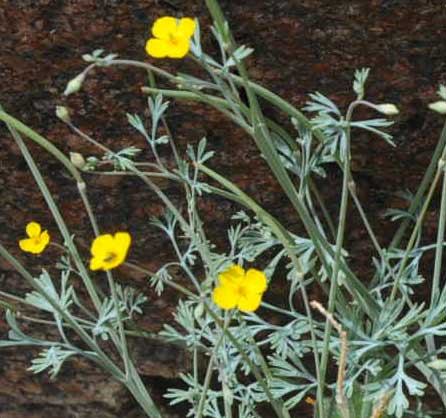
^Little gold poppy (Eschscholzia minutiflora).
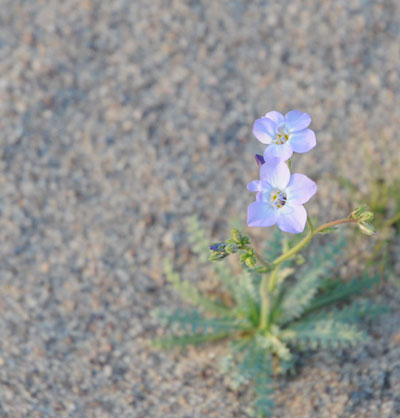
^Broad-flowered gilia (Gilia latiflora).
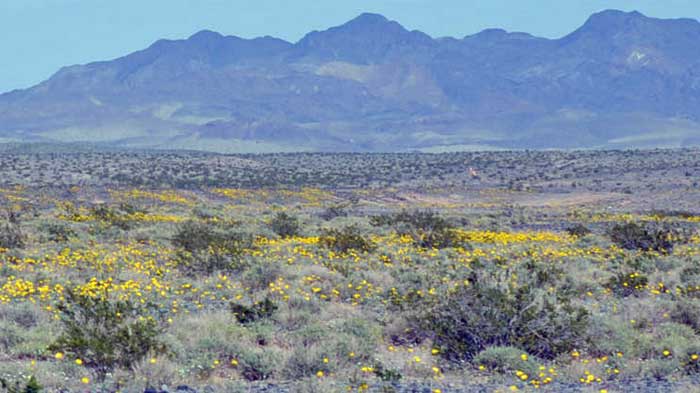
^Project site: desert gold in creosote-bursage bajada below the Cady Mountains.
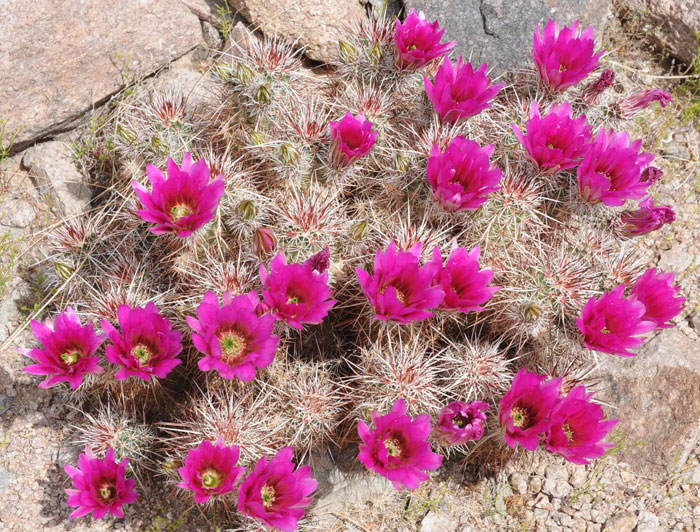
^Calico cactus (Echinocereus engelmannii) in full bloom. Also called Hedgehog cactus.
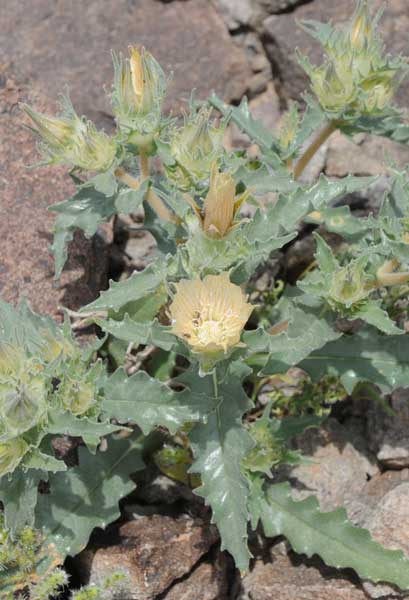
^Blazing star (Mentzelia involucrata).
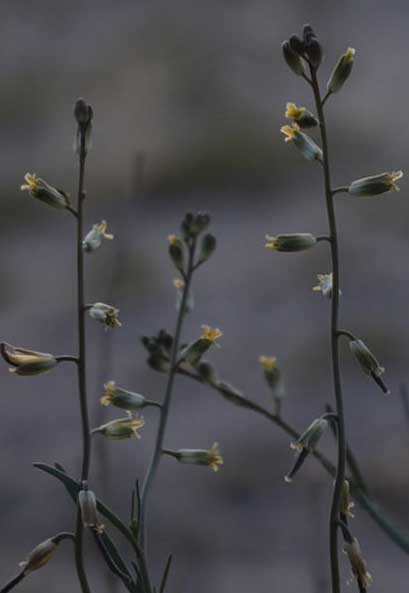
^Twist-flower (Streptanthella longirostris).
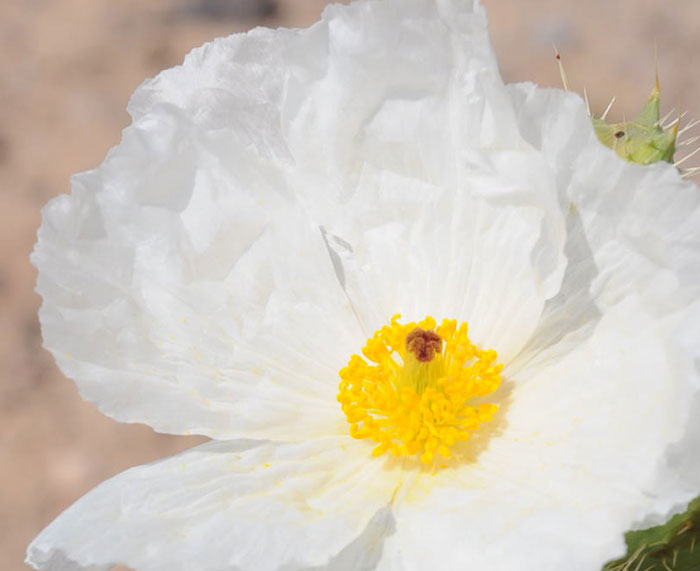
^Prickly poppy (Argemone corymbosa).
Rare Plants

^Small-flowered androstephium (Androstephium breviflorum). This is a rare plant on California Native Plant Society's List 2.2; California Department of Fish and Game also considers it rare.
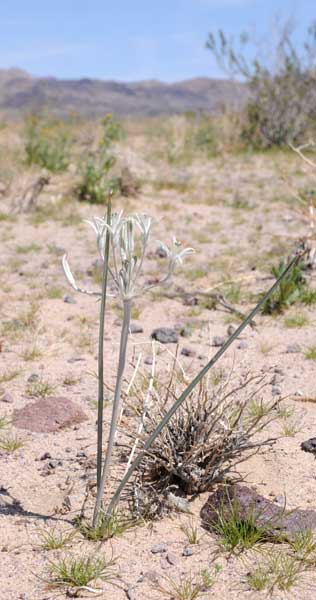
^Small-flowered androstephium comes up from a bulb in sandy areas. This is on the project site.
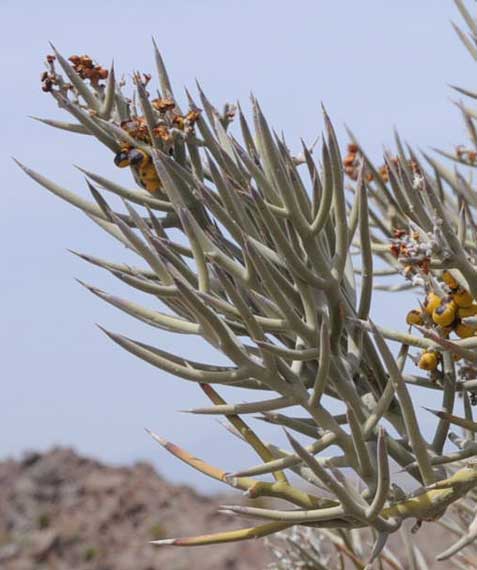
^Crucifixion thorn (Castela emoryi). This shrub has very strong woody thorns and no leaves. A total of six plants have been found on the project site.
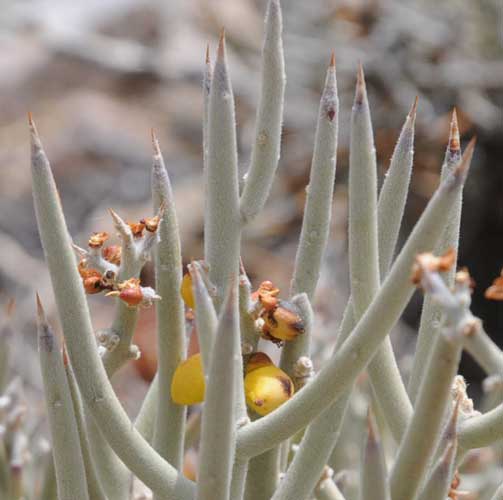
^Crucifixion thorn with drupes.
Bighorn Habitat
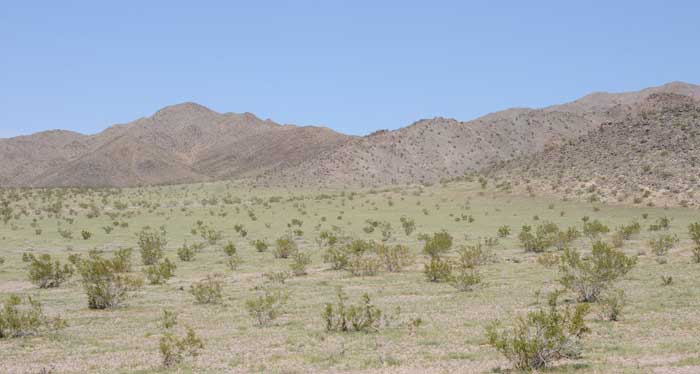
^A green lawn of native small wildflowers, Plantain (Plantago ovata), Cryptantha, and Comb-bur, at the top of the fan near the base of the Cady Mountains. Upper fans provide important spring forage for Bighorn sheep. This area would be largely obliterated by the project.
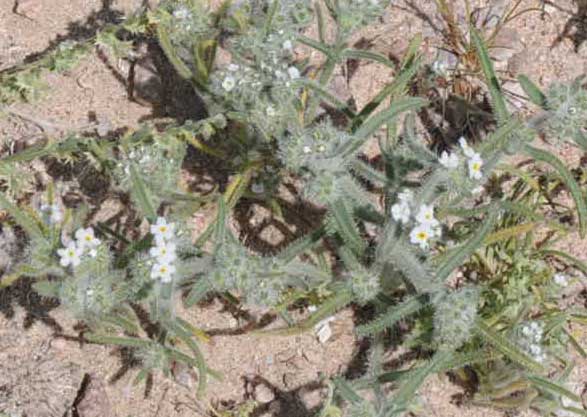
^White-flowered Cryptantha (Cryptantha sp.) and Comb-bur (Pectocarya sp.), minute wildflowers greening up in March.
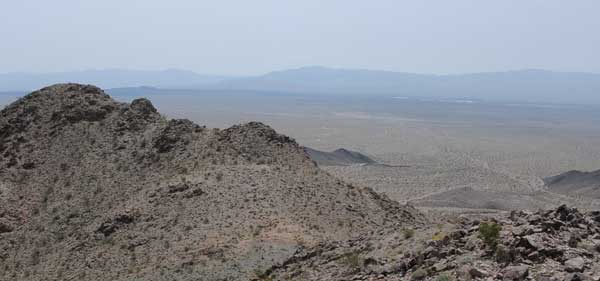
^Bighorn sheep occupy the Cady Mountains. View looking southeast over the project site. A Golden eagle was circling and calling over this area. It may have a nest somewhere in the cliffs.
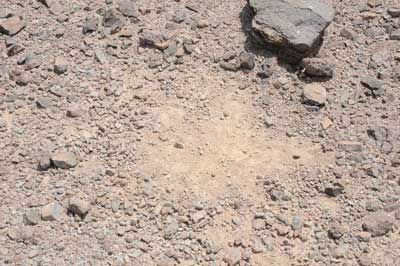
^Bighorn sheep bed in mountains within a mile of the project boundary.
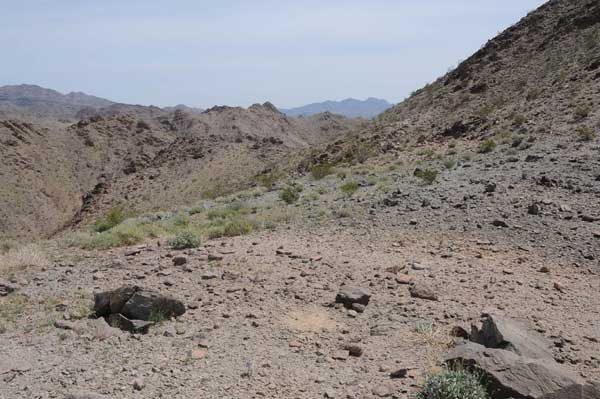
^Bed on Cady Mountain ridges.
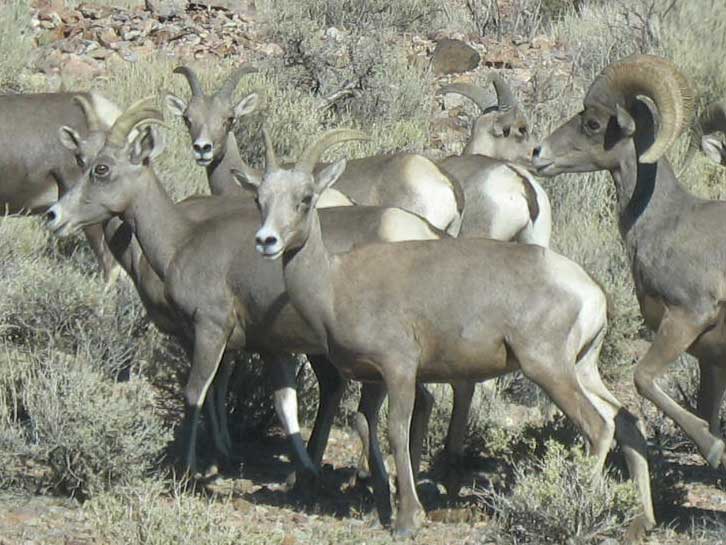
^Desert bighorn sheep.
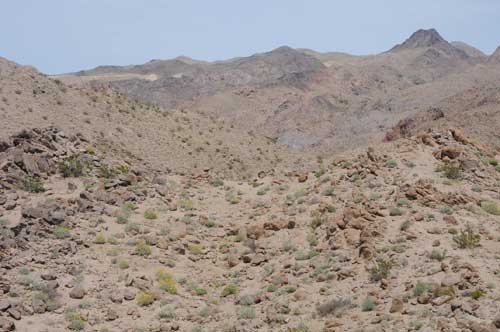
^Rugged sheep habitat.
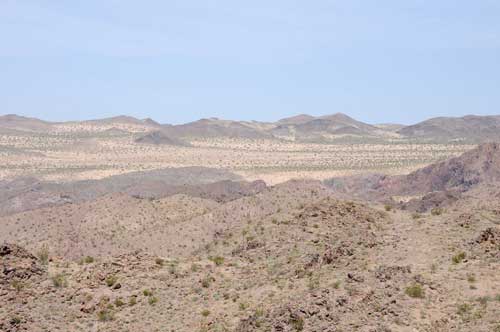
^Bighorn sheep occupy this area year-round. In the background is a large sand sheet blown up into the mountains by the prevailing westerly winds over the centuries.
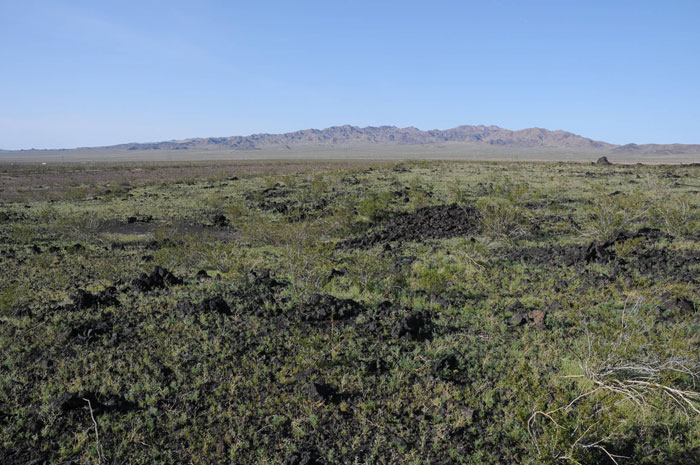
^Panorama of the Cady Mountains and project site on the fan below it in the distance, as seem from the Pisgah lava fields to the south.
Mojave fringe-toed lizard
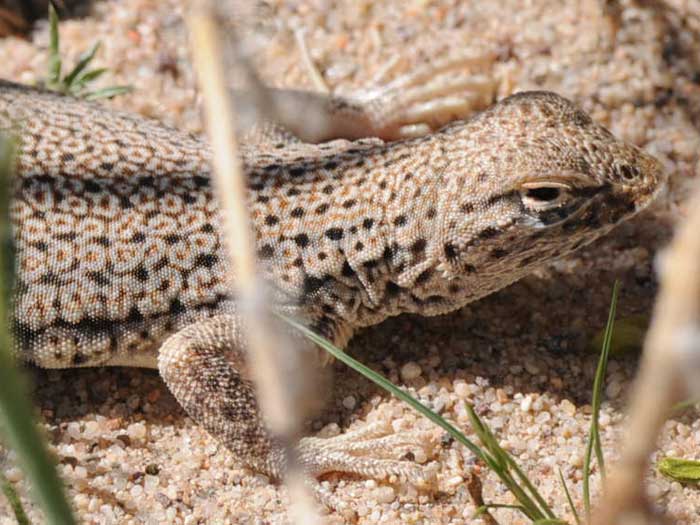
^Mojave fringe-toed lizard (Uma scoparia), on the project site. The project would destroy this habitat and seriously impact the population here.
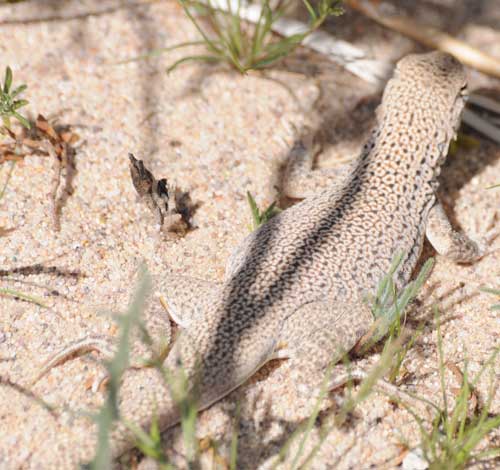

^Fringe-toed lizard habitat on a sandy hill, looking up towards the Cady Mountains. The sandy areas are extensive. SunCatchers would be built here.
Wildlife
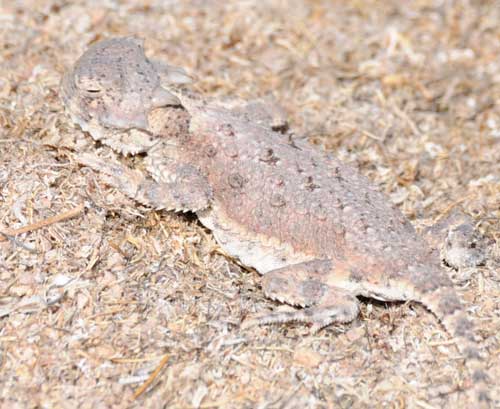
^Desert horned lizard (Phrynosoma platyrhinos) young adult on the project site.
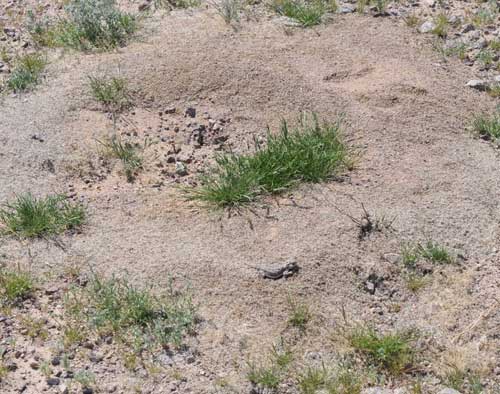
^Horned lizard basking on an ant hill.
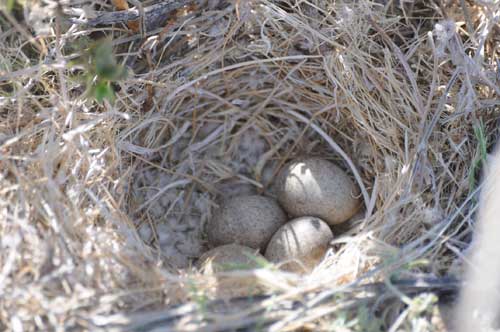
^Horned lark nest on the project site.
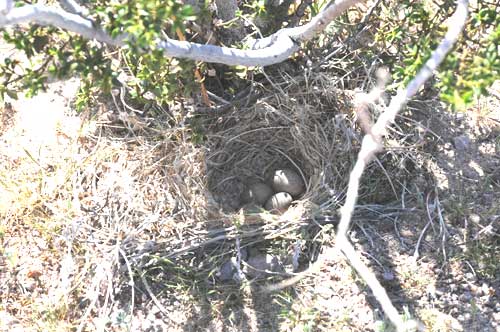
^Horned lark next in a depression in the ground under a creosote bush.
Other birds seen this day include: Red-tailed hawk, Golden eagle, Blue-gray gnatcatcher, Black-throated sparrow, Scott's oriole, Tree swallow, Common raven, Rock wren, and House finch.
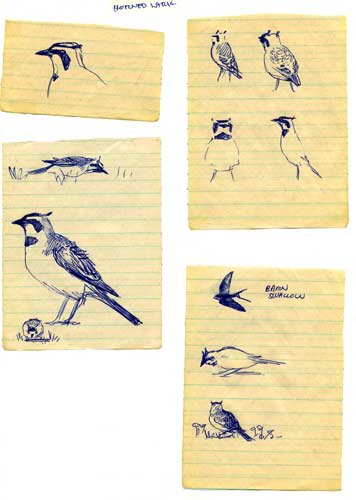
^Sketches of Horned larks.
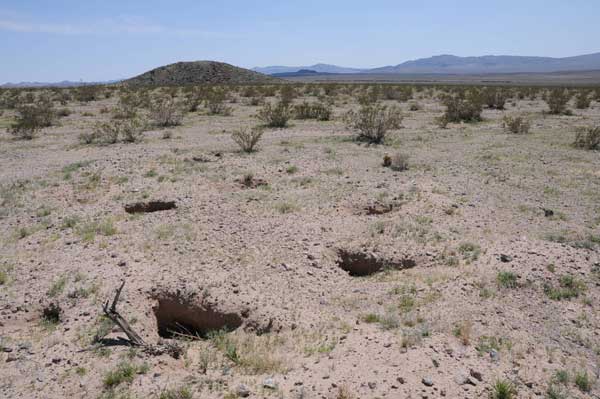
^Kit fox burrows that may have been expanded by a Badger. Top of fan in project site.
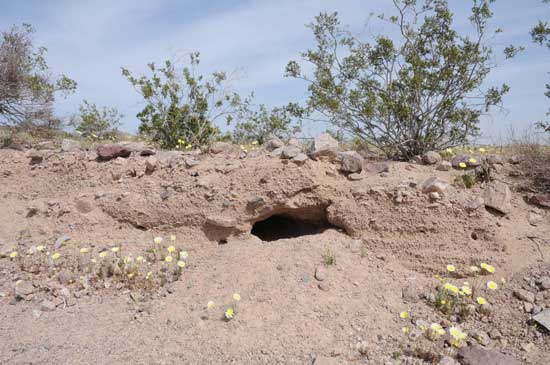
^Great Desert tortoise burrow in a wash bank on the site.
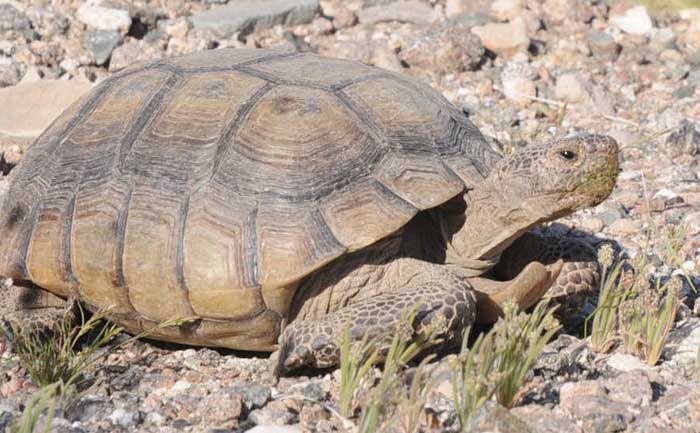
^Male Desert tortoise munching on native plantain.
Next to Proposed Mojave Trails National Monument
^Map showing the Calico Project Site in black outline, and the proposed new national monument in blue. We suggested additional Key Observation Points (KOP's) for visual analysis from the Rodman Mountains Wilderness, to assess how visible the power plant will be (Source: Calico Solar Project Staff Assessment/Draft Environmental Impact Statement).
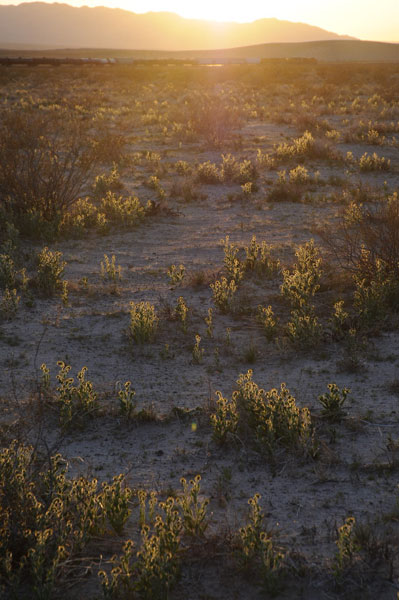
^Fiddleneck (Amsinckia tessellata) catch the sunlight on the eastern part of the project.
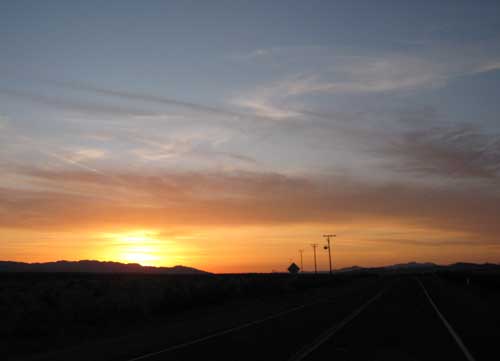
^Sunset from lonely Route 66 just south of the project.
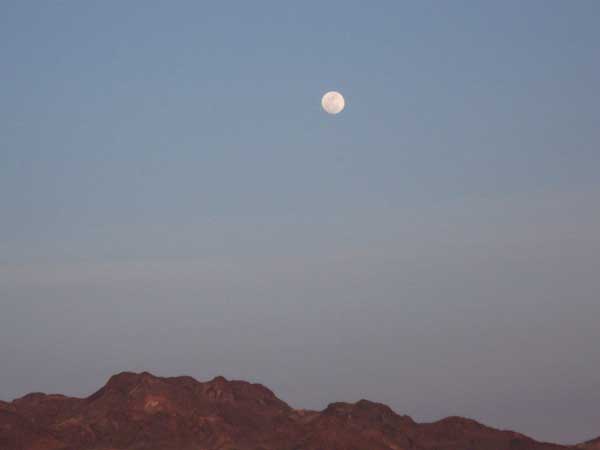
^Moonrise seen from the eastern edge of the project site, over the Cady Mountains.
HOME.....Calico Solar Updates.....July 2009 Site Visit.....Stirling Dish Technology Report
